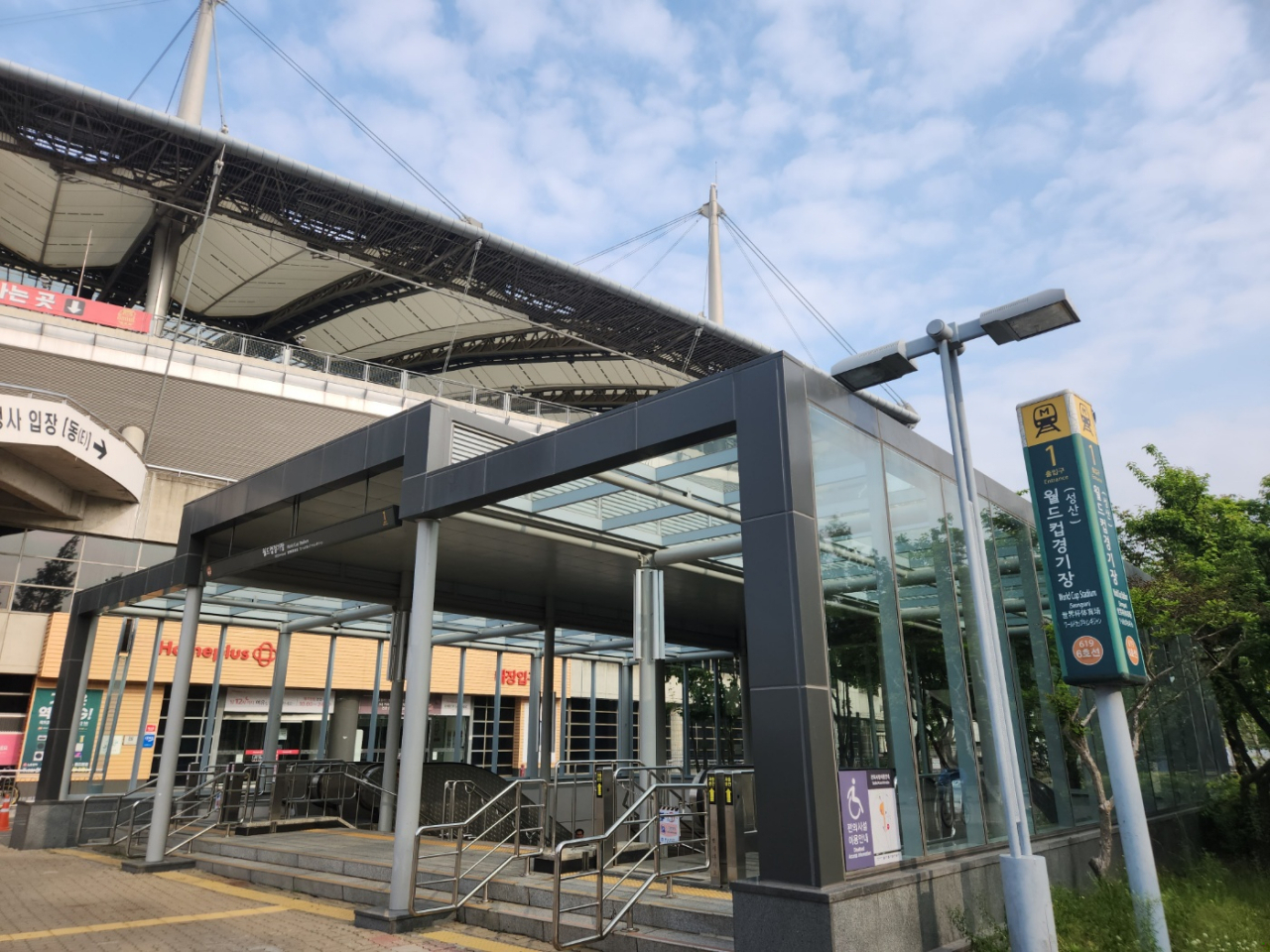
Despite its name, World Cup Stadium (Seongsan) Station can get crowded for a number of reasons outside of just sports, such as couples going for a night out at the movies, families shopping at the supermarket, or even K-pop fans flocking to a concert.
The station on Seoul Subway Line No. 6 opened in 2000 as the gateway to Seoul World Cup Stadium, which hosted the opening ceremony and games of the 2002 FIFA World Cup, jointly hosted by South Korea and Japan.
Its beginnings, however, were humble. In the early 1990s, it was first proposed as a way to improve transportation to the Seongsan-dong area, which was a less-developed neighborhood in Seoul's Mapo-gu.
World Cup and the K-League
In 1992, it was decided that a subway station would be constructed in Seongsan-dong with the name of Seongsan Station. The area was far less high-profile than the popular Hongdae area in the same district, as it was a mostly residential area, and constructing a small station there hardly dominated the headlines.
This situation changed when South Korea won the bid to host the 2002 World Cup in 1996.
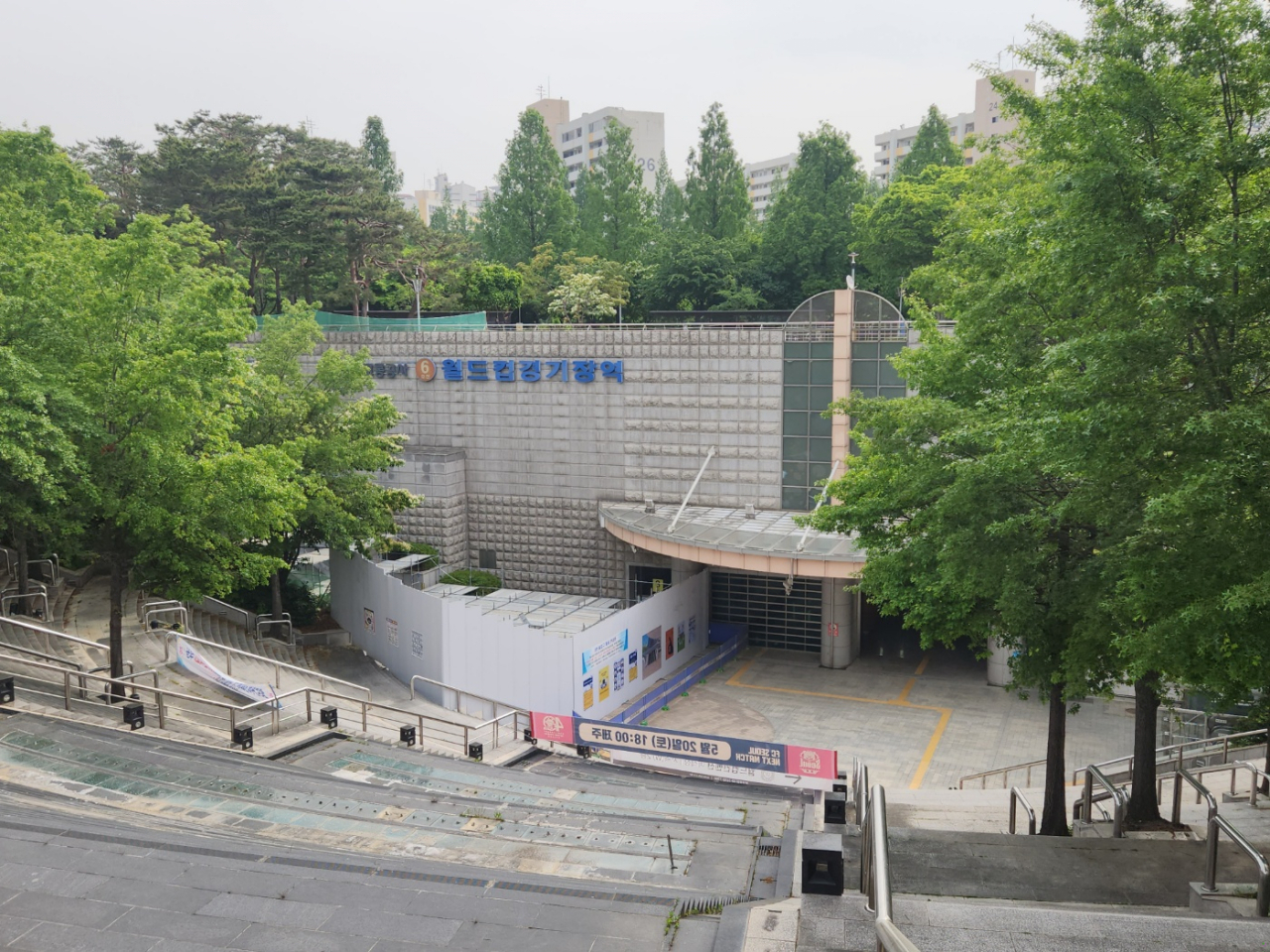
Up until that point, the country had lacked the infrastructure to host the world’s most prominent soccer event.
The Seoul Sports Complex in Jamsil, which had hosted the opening ceremony of the 1988 Olympics, was deemed unfit, due to its out-of-date facilities and the fact that it was not built as a soccer stadium. After mulling over a few options, which included the remodeling of the Jamsil complex into a proper soccer stadium, the Cabinet decided in 1998 that a new stadium should be built in Seongsan-dong.
This development drastically changed the plans for the subway station. The station's original name was quickly put inside parentheses, and it was decided that a much bigger platform would be built than what was originally planned to accommodate the thousands of people expected to visit the station for games.
During the World Cup, the newly built stadium hosted three games, including the semifinal between South Korea and Germany, which was the most important game held in the country. The final match and closing ceremony were held in Japan.
After the World Cup, however, the brand new, pricey stadium was destined to remain idle, because Seoul did not have its own K-League team at that time. The K-League is South Korea’s top pro soccer league.
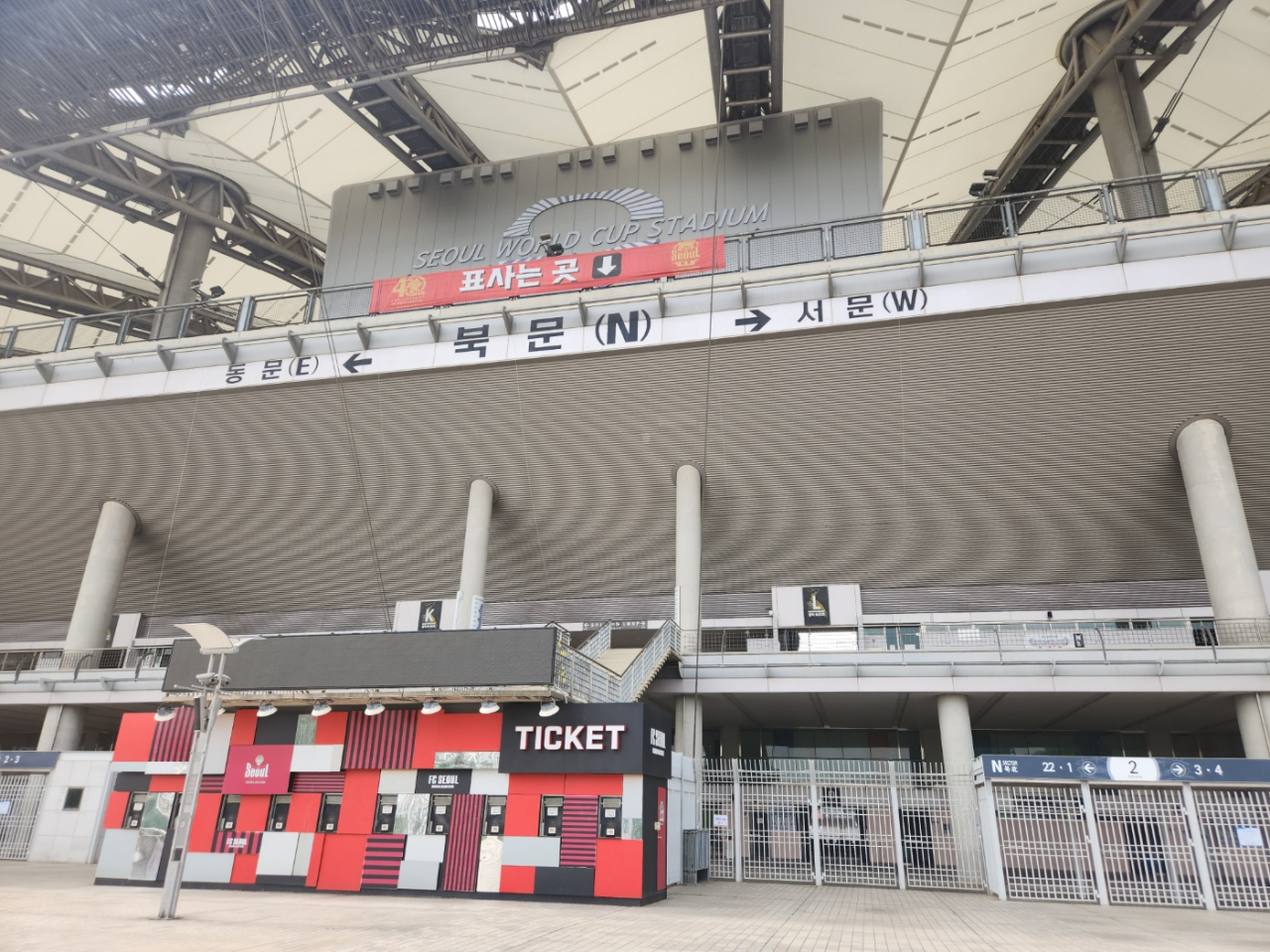
In 2004, the Anyang LG Cheetahs moved to Seoul and starting playing their home games at Seoul World Cup Stadium.
The stadium is now home to the South Korean national team and FC Seoul -- which is what Anyang LG Cheetahs were rebranded to following their relocation. The venue hosts up to 66,704 fans for major soccer matches held in the city. It is among the largest soccer-specific stadiums in Asia in terms of capacity.
Many in Korea mistakenly call it "Sangam Stadium," thinking it is located in Sangam-dong, not Seongsan-dong. But Sangam-dong is home to World Cup Park, not World Cup Stadium. The two are not far from each other, but they are located in different administrative jurisdictions.
From camping to shopping: features and attractions
The main attraction in the area surrounding World Cup Stadium Station is obviously the stadium, which, when not hosting games, offers tours of its facilities to groups of 10 or more.
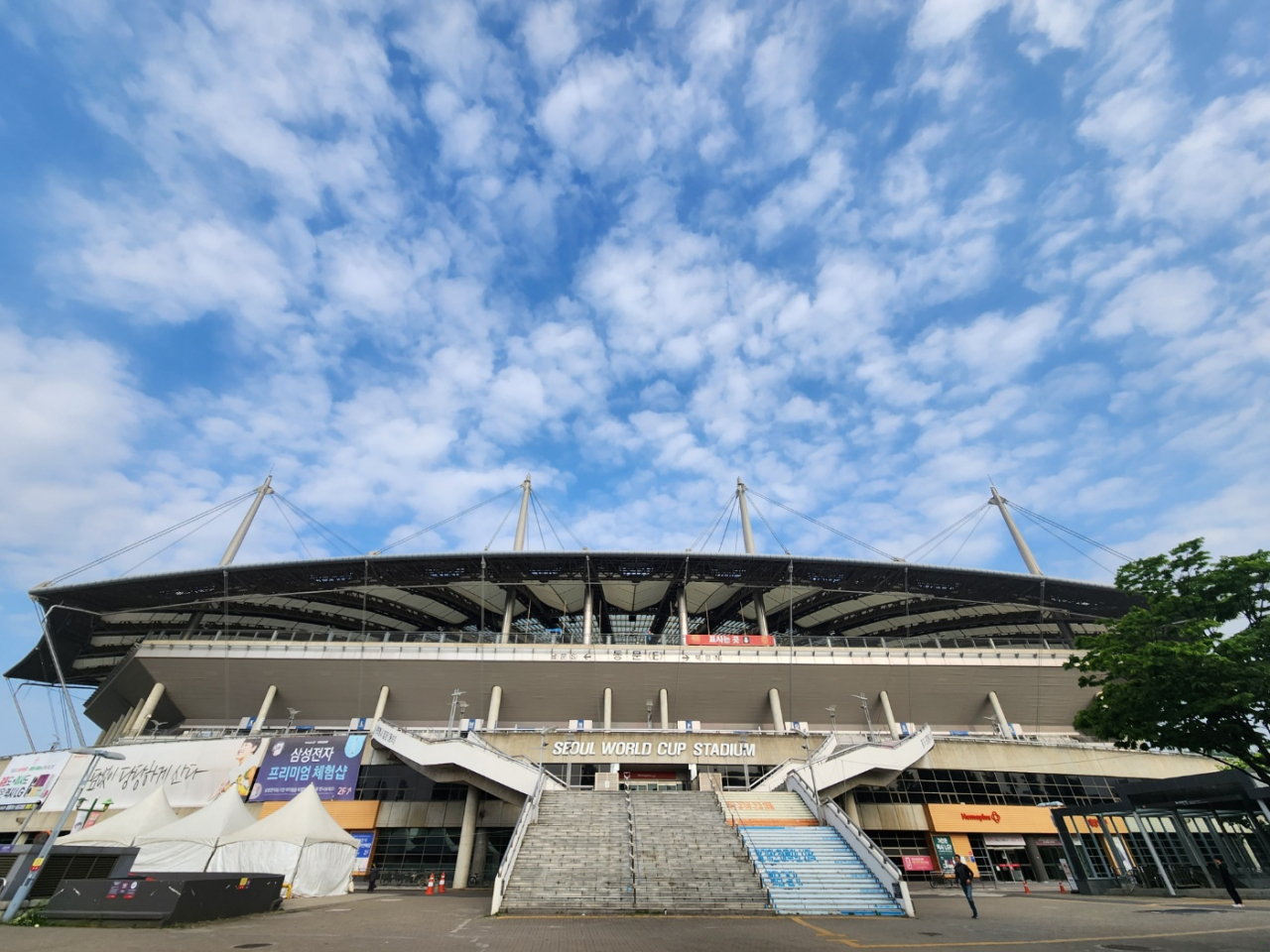
The tour covers the field, coaching staff room, locker room, warm-up room and an exhibition of the stadium’s history. It is held four times a day, lasting an hour. It costs 1,000 won per person, with varying levels of discounts, and can be booked through the Seoul Public Service Reservation webpage.
It also has played host to numerous large-scale concerts, including the annual “Dream Concert,” a joint performance by prominent K-pop acts. The concert was held at the stadium from 2009 to 2019, and has since moved to other locations.
The stadium has a Megabox movie theater and a Homeplus supermarket, with the latter being the third-largest Homeplus store in the country. Other facilities include a food court, indoor pool, fitness center and even a wedding hall.
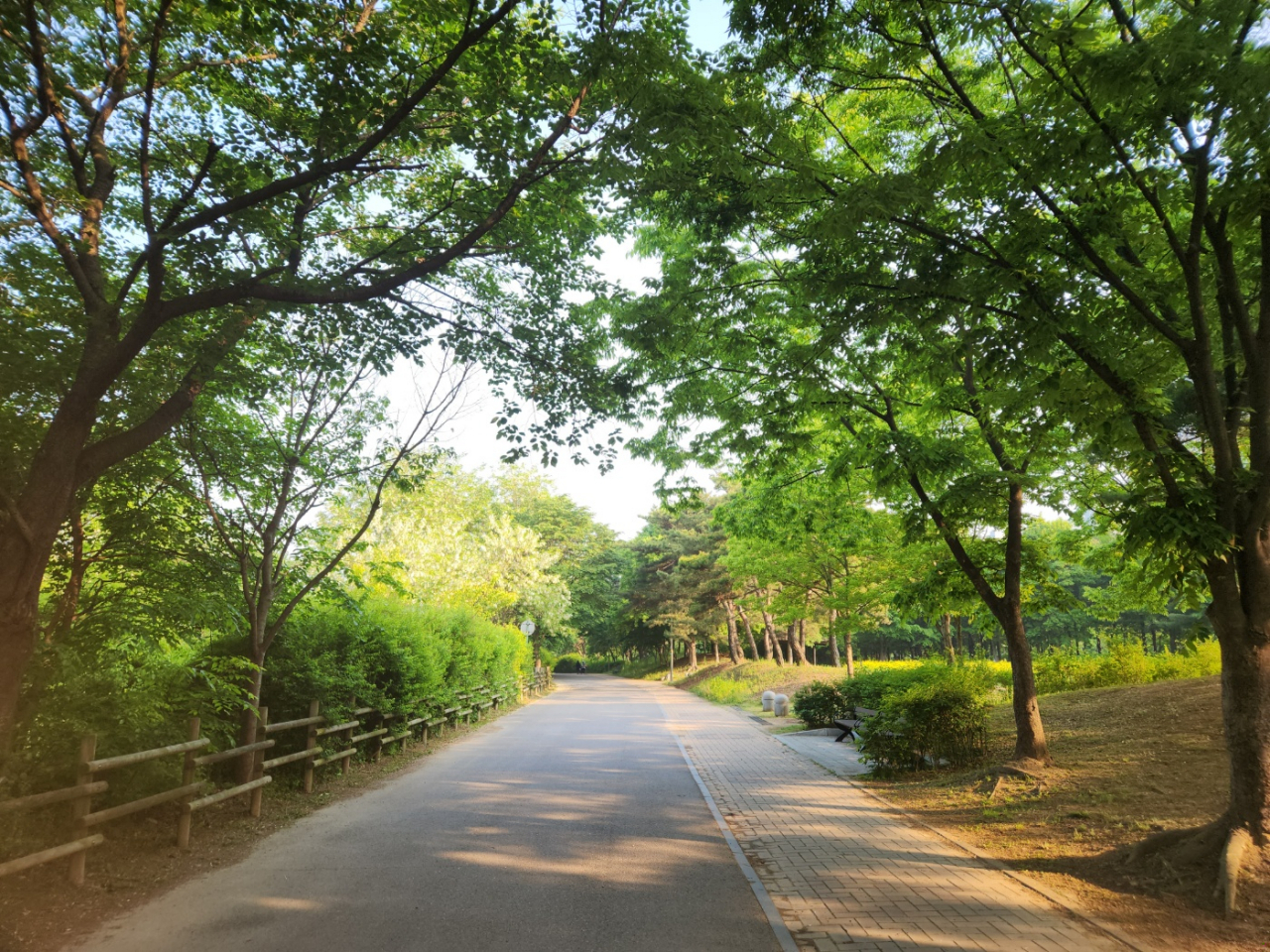
People also come to the area to relax in the open green space. Just south of the stadium, past the Mapo Agriculture & Marine Products Market, is Peace Park, open from 9 a.m. to 5 p.m. It has a pond, garden and forest.
Out west are a series of green spaces that are all part of World Cup Park. The square-shaped Haneul Park is open from 5 a.m. to 10 p.m., although hours can vary depending on the season. It is a nice place to visit with dogs, with a wide area for them to play in. It is most popular in fall, when the tall silver grass creates a stunning sight.
In the Noeul Park section, there is a campground that can be used from April to November. Campers must reserve a spot beforehand and prepare all equipment, including a tent, as the park does not provide rental services. There are, however, basic facilities such as drinking fountains, shower booths, bathrooms and tables.
Campground reservations open at 2 p.m. on the 15th of each month. But if that date falls on a national holiday or weekend, reservations open at the same time the next day. Operating hours for the camp site are from 2 p.m. to noon the next day, and campers must enter before 10 p.m. It is closed on Mondays.





